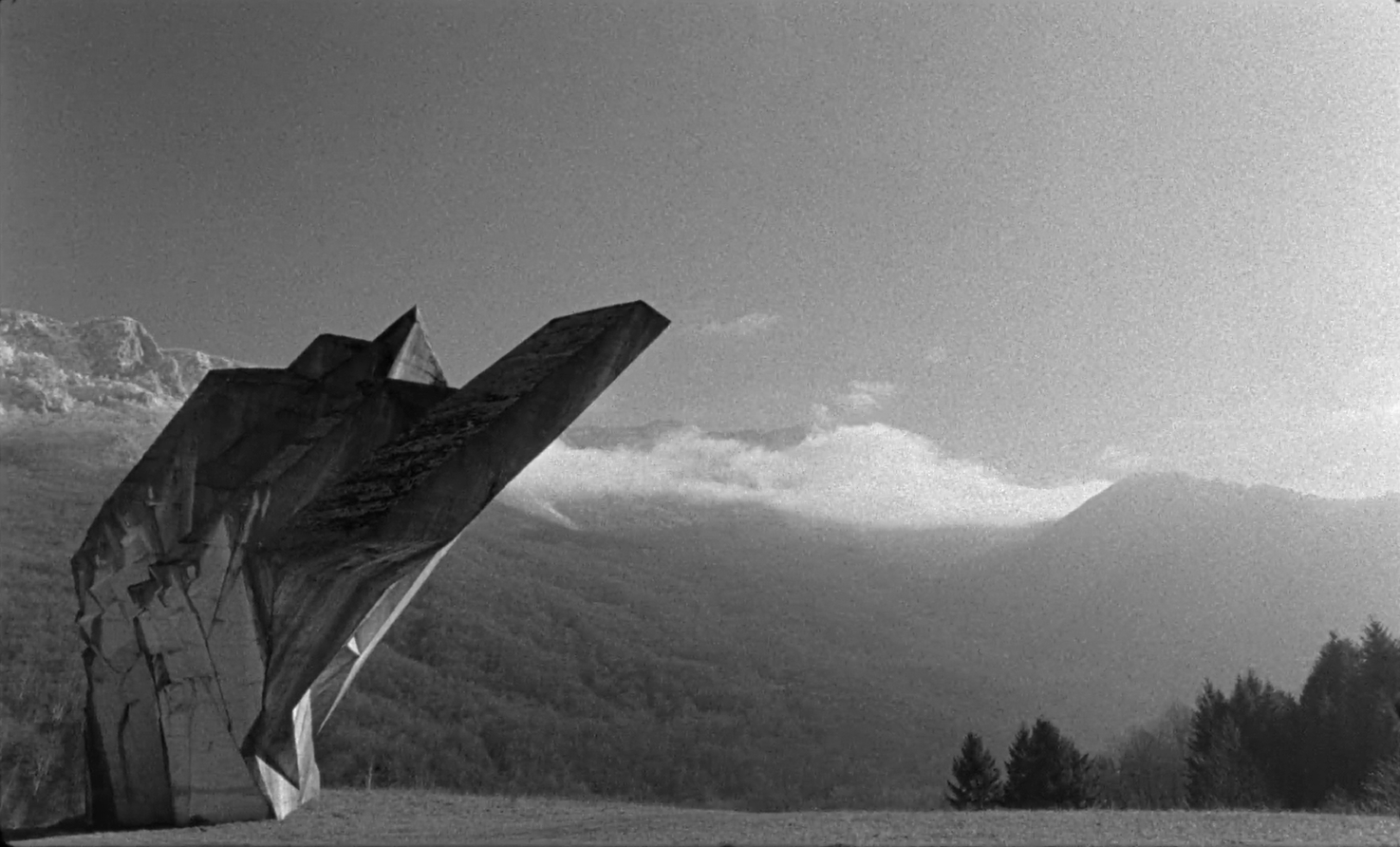
★★★★½
Directed by Jóhann Jóhannsson
Cast - Tilda Swinton
Last and First Men (2020)
Written by Dalton Welsh - February 16, 2021The moody, pensive sounds of director Denis Villeneuve’s films Arrival, Prisoners and Sicario were all crafted by the ingenuity of one Johann Johannson. Making for some of the most impassionately intense and stupefyingly unnerving scores of recent memory. This very same energy of unwavering originality and heart rattling fixation can be felt in Johannson’s first and sorrowfully final directorial effort ‘Last and First Men’.
The film, premiering two years following Johannson’s passing, concerns a narrator contacting us from two billion years in the future, explaining how humanity has changed and is now in imminent danger from the expanding sun, this story unfolding as we follow the camera scrutinising surreal monuments and structures left behind on an earth that feels familiar yet distinctly alien. With an engaging audio narrative with accompanying narration from one Tilda Swinton, beautifully captured 16mm imagery, an artfully used production and a haunting engulfing score, all make for a film that feels so distinctly Johannson.
As mentioned the visuals of the film consist of various enchanting unearthly structures. These monuments in real life being WWII memorial sculptures in the outlands of Croatia. Just on their own these large scale, three dimensional artworks are a sight to behold in both their compelling shapes and curvature as well as their grand size, reinforced by the often accompanying fog that looms about them in the film. Then pairing them with this grandiose sci-fi tale and ominous music provides them with a wholly new connotation. The narration never explicitly says what these structures are meant to be, as an audience member we draw the conclusion that they were used by these advanced beings of the future, only to be abandoned. Which really speaks to the tantalizing, enigmatic power of ambiguous storytelling, if we were directly told what they were we could quickly lose interest, but by not doing so we feel attached to the camera as it too closely examines and slowly unfurls the details of these ominous constructions, trying to make sense of it, feeling an entrancing chill down our spine at the possibilities of their intendment.
Johansson also elected to shoot the film in black and white 16mm film. Which felt like a surprisingly fitting way to capture these supposedly futuristic configurations. Given the modern normality of shooting films using digital cameras, when captured using film, particularly something as grainy as 16mm the visuals feel foreign to a time before. So when used to view a distant future the association of a foreign time still persists. Additionally making it feel like footage someone stumbled upon, something that perhaps we weren’t supposed to see. The motion of the camera is also befittingly methodical with constant slow zooms accompanied by effective spirals.
The aesthetic and motion of the camerawork is then paired perfectly with the film's score, unsurprisingly also composed by director Johannson. Hauntingly engrossing the score makes use of soft chanting, and various, what sound like, wind based instruments. It felt similar thematically to what Hans Zimmer was trying to achieve with his score for ‘Interstellar’ using instruments that required human breath, in Zimmer’s case a church organ, to have a throughline of human connection in the score. I found the piece titled ‘Physical Description of the Last Human Beings’ to be particularly emblematic of the film's tone. Feeling alien and unnerving whilst also having an air of spiritual antiquity.
And finally there is the film’s narrative as narrated by Tilda Swinton. The story is based on the 1930’s book of the same name by Olaf Stapeldon, which became greatly influential for many subsequent science fiction writers. The presentation of it as future historical fiction was immensely ahead of its time. Then, in the film, the way it slowly dishes out more details about how humanity has evolved both physically and in their culture is fascinating, made especially engaging by the great voice over work of Tilda Swinton who does excellently as the sole, faceless, character of the film. Through her tone of voice and use of language you can really feel a sense that she isn’t of this time.
So, through use of abandoned Croatian monuments, the absence of explanation to their unnatural shape and curvature aiding the films aura of an unimaginable and mysterious future, captured in gloriously grainy 16mm black and white film to further fuel the foreign nature of the narrative and visuals, a hauntingly humanistic score and an effectively engaging and fascinating story of the far off future presented soulfully by Tilda Swinton make for one of the most unique film experiences of recent memory. The notion that we will never get to see what Johann Johannson’s future in directing would have looked liked is especially tragic after watching such a lovingly crafted piece of modern art.
